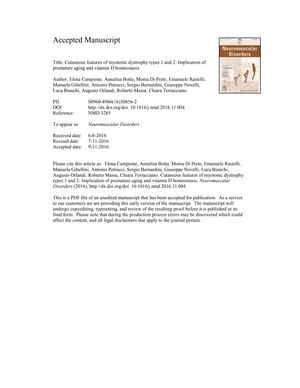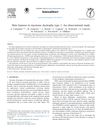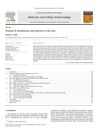Cutaneous Features of Myotonic Dystrophy Types 1 and 2: Implications of Premature Aging and Vitamin D Homeostasis
November 2016
in “
Neuromuscular Disorders
”

TLDR Patients with myotonic dystrophy often have skin problems that suggest early aging and vitamin D issues, and the severity of these problems is linked to their genetic condition and vitamin D levels.
The study from six years ago investigated skin abnormalities in 60 patients with myotonic dystrophy type 1 (DM1), 15 patients with type 2 (DM2), and compared them to 103 control subjects. It found that patients with DM1 and DM2 had a significantly higher occurrence of skin issues such as dysplastic nevi, alopecia, xerosis, and seborrheic dermatitis, which are indicative of premature aging and disrupted vitamin D regulation. In DM1 patients, the number of nevi was directly related to the CTG expansion size, which is a genetic indicator of disease severity, and the presence of dysplastic nevi and xerosis was inversely related to vitamin D levels. Although none of the 28 excised nevi in DM patients were melanoma, 12 were dysplastic. The study concluded that skin examinations can provide valuable information for DM patients and that the most frequent skin abnormalities are associated with the severity of the genotype and vitamin D levels, suggesting the need for regular skin checks and vitamin D monitoring in these patients.



